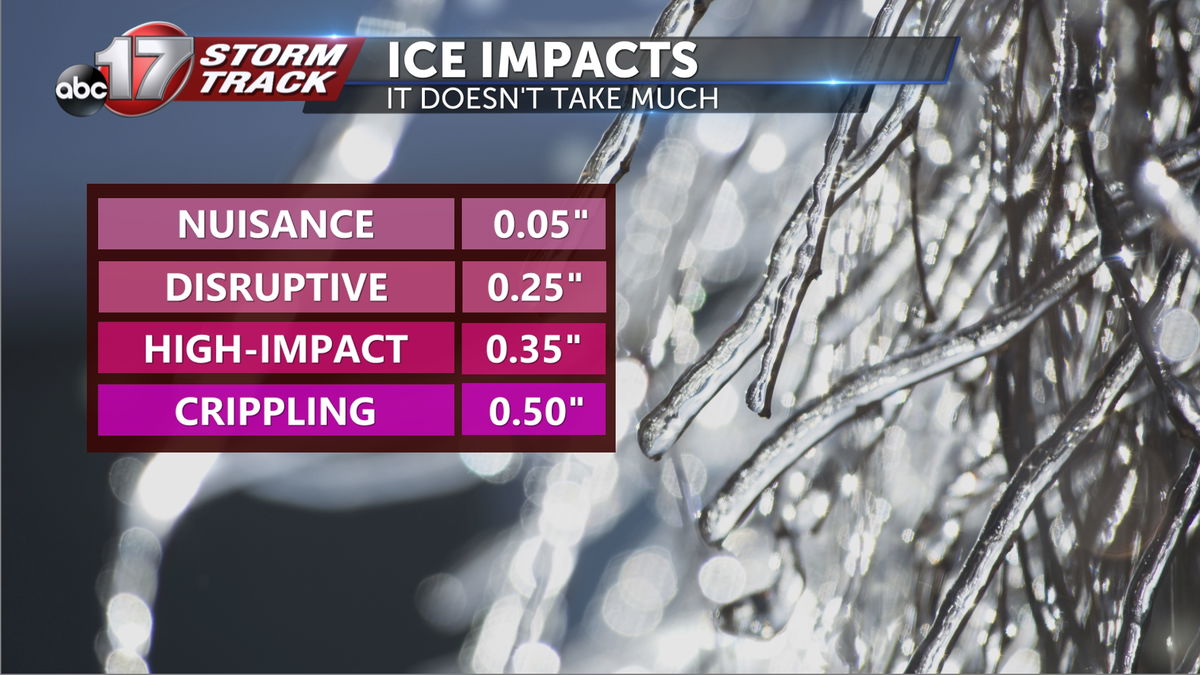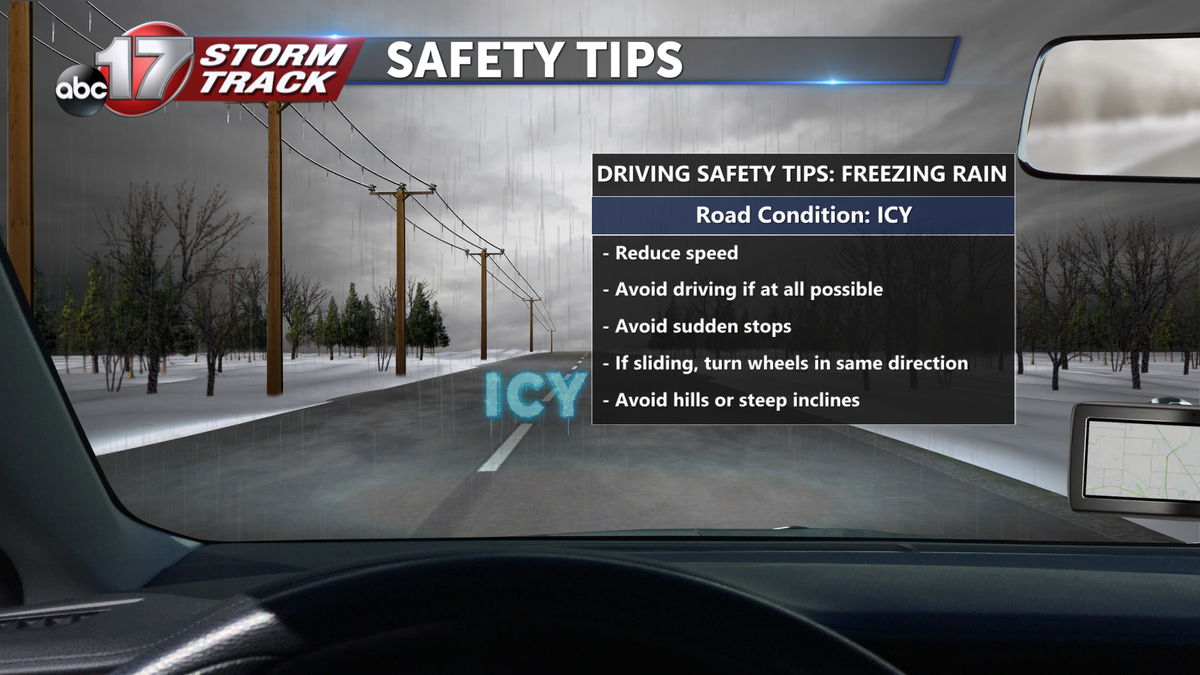Winter weather preparedness week: Ice safety
Day two of Missouri's Winter Weather Preparedness week is in swing with ice being the topic of focus. Each year, a majority of Mid-Missouri sees the possibility of freezing rain or sleet. But what causes these two types of winter precipitations to form, and how much ice does it take to become dangerous for traveling?

There are four separate types of winter precipitation seen throughout all of Missouri including rain, freezing rain, sleet, and snow. Two of these are composed of ice. Freezing rain forms as snow falls into a warm layer in the atmosphere above 32 degrees Fahrenheit. This causes the snow dendrites (flakes) to melt into rain droplets. The rain droplets then fall through another layer of the atmosphere closer to the surface of the earth that is below 32 degrees Fahrenheit. The rain droplets drop below 32 degrees, but remains in its liquid state because of the atoms remaining in motion. Once the freezing rain makes contact with surfaces on the earth, the motion of the rain droplet stops and it freezes into a thin layer of ice instantly. Sleet follows a similar pattern, but the warm layer in the atmosphere is much smaller during its formation and the below freezing layer below the warm layer is much larger. This allows the rain droplet to freeze more affectively become a solid sphere of ice before it makes contact with the earth's surface.

Freezing rain causes the most severe travel conditions as it lines surfaces with ice reducing friction and traction. 1/4" alone of ice on a surface can cause disruptive conditions to traveling. Over 1/2" of ice, can cripple entire cities leading to a shut down of all normal operations.

The best advice when it comes to driving in ice is to avoid it completely. But if you must drive, there a few good tips to remember. Make sure to reduce speeds while driving during icy road conditions as friction is reduced greatly between your tires and the road. This means a greater stopping time and an increased risk of losing control. Make sure if you do have to stop, you are planning on doing it way ahead of time to avoid loss of traction. If you do lose control and start sliding, make sure to turn wheels into the direction of the slide to have the best chance of regaining control.
